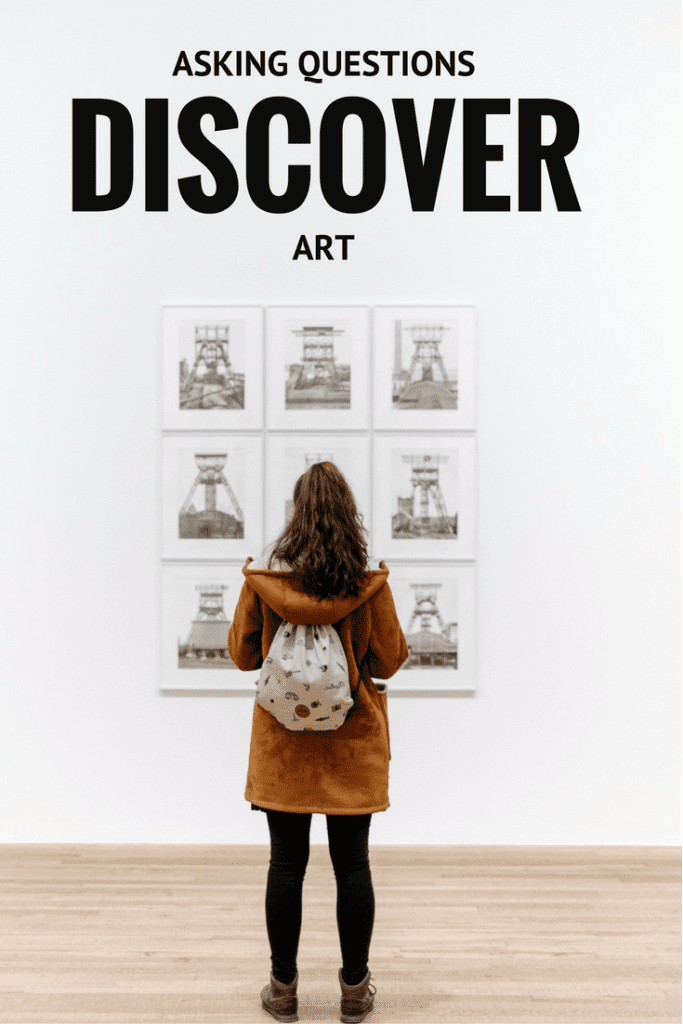Are you allowing students to discover?
” When the artist is alive in any person, whatever his kind of work may be, he becomes an inventive, searching, daring, self-expressive creature. He becomes interesting to other people. He disturbs, upsets, enlightens, and opens ways for better understanding. Where those who are not artists are trying to close the book, he opens it and shows there are still more pages. ” ~ American Painter Robert Henri
We’ve all heard the phrase there is no such thing as a bad question, I’m going to go ahead and say that there is. Many questions are a result of not taking the time to think, of being too afraid of getting the answer wrong, and a demonstration of refusing to explore.
While teaching in a high school classroom my day was filled with questions, that with a little time, or just a moment of thinking might result in coming up with the answer.
Mrs. Kane is this good?
Mrs. Kane what size is a 4”x5” piece of paper?
Mrs. Kane which side of the sink is hot and which is cold?
Why is my photo upside down? ( because you need to turn it around)
Mrs. Kane is this black?
Mrs. Kane is this white?
You may be thinking that I’m making these up, but I’m not.
While it would be faster, easier, and less painful for me to respond, yes that is good, the size of a 4”x 5” piece of paper is 4”x5”, hot is on the left, cold is on the right. Instead, I attempt to turn these into learning moments, so I respond with a question.
What do you thinking is working well about your project? or What don’t you think is working? What don’t you like?
Why don’t you go and get a ruler and measure?
What colors usually represent hot and cold?
Why don’t you try turning your photo a few different ways and see if it fixes your problem?
If you’re not sure if it’s black , why don’t you go and compare it to the piece of paper that you know is black?
And then in the midst of it all, a student walks up and asks…
Mrs. Kane do you think that putting sand on metal and heating it, would act similar to the enamel? Hmmm, that’s a good one, let’s give it a try. It didn’t work, the sand turned from a deep brown to an off white. But it didn’t matter that it didn’t work. It led to a lot of questions, research and experimenting. It lead to thinking and learning. ( Note, we only try things that I know won’t involve an explosion or a student getting injured)
Mrs. Kane do you think that instead of using wire, I could solder nails together? Go and ahead and give it a try.
Students are playing in the slip ( watered down clay, used for connecting pieces of clay when building) . Mrs. Kane we love how this looks when it splats on to the table, is there some way that we can turn this into a sculpture.
Well, why don’t you make a lot of “clay splatters” let them dry, put them in the kiln, glaze them and see what happens. With shock and excitement, they have paper spread across the floor in a matter of minutes, and they eagerly begin dropping clay, splat, splat , splat. There is laughter, excitement.
Will this make the result that they desire, I don’t know, and it doesn’t matter. I care that they had an idea , an I wonder what would happen if moment, and followed it through . I care that they’re experimenting, learning, discovering. That they’re willing to make a mistake, get it wrong, and have to throw everything away. I care that they aren’t looking to me for the right answer, and instead are finding it on their own. I care that they are learning.
What kind of questions are you asking your students?
